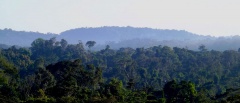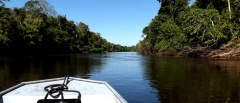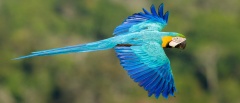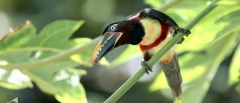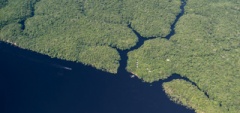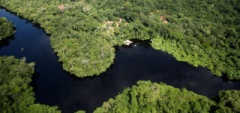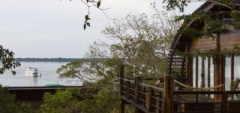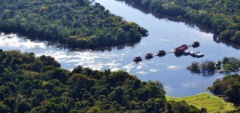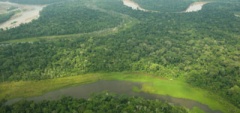The Amazon in Brazil
Nothing can compare to the sights and sounds of the Amazon rainforest...
The Amazon Rainforest is one of those destinations which should be on everyone’s bucket list. Nothing compares to seeing the sun rise over the canopy of the rainforest and hearing the forest come to life as dawn breaks. Above all, going to the rainforest offers a unique opportunity to go somewhere where nature still rules and lives freely in the wild. There are two ways to access the Amazon rainforest in Brazil, either through the more well-known routing of Manaus in the North or through the lesser known, but more easily accessible route of Mato Grosso in the South.
Southern Amazon
Set within a part of the Amazon forest which has been largely cleared to make way for soya and cattle farms, Cristalino Rainforest Reserve is one of the best preserved areas of rainforest in Brazil and one of the most biodiverse locations in the Amazon for seeing birds, monkeys, butterflies and orchids. A large number of species which are endemic to the area such as the white-cheeked spider monkey, red-nosed saki, cryptic forest falcon, crimson-bellied conure, and black-girdled barbet, can be only be found within the reserve. It is so diverse in fact, that new species are still being discovered here.
Unlike the northern rainforest around Manaus, the southern Amazon region lies 300 - 450 metres above sea level, meaning it doesn’t generally flood. This, combined with the region’s proximity to the Pantanal and the Cerrado, results in very distinct types of vegetation and species. The reserve alone is home to six different types of vegetation, creating a rare mosaic of micro-ecosystems which are home to specific species of birds, mammals, plants and insects.
For birdwatchers, there are a total of 586 species of avifauna recorded in the area and around 50% of the total number of avifauna species found in the Amazon region can be found within the Cristalino Reserve. It is also home to a variety of mammals including those you would see in the Pantanal such as the Brazilian Tapir, white lipped and collared peccary and capybara. There are giant river otters to be spotted on the banks of Rio Cristalino and many species of monkey living amongst the trees, waiting to reward the patient observer. A model for responsible ecotourism, at Cristalino, any chance you get to see wildlife is completely natural, making it even more rewarding when you do.
Click here to view some video footage of the Southern Amazon area.
Manaus and the Northern Amazon
The capital of Amazonas state, Manaus is the traditional entry point for the Brazilian rainforest. A modern city and a busy port for goods from Peru and Colombia, Manaus flourished in the rubber boom in the late 19th and early 20th century. Although the rubber boom collapsed in the early twentieth century, relics of this period remain, such as the ornate Teatro Amazonas and the attractive Praça São Sebastião.
Most will move quickly on from Manaus to one of the rainforest lodges further out. To the North, are the darker waters of the Rio Negro and the fantastic scenery around the world’s largest river archipelago, Anavilhanas. To the West are the browner waters of the lower Amazon, River Solimões, and the flooded forest areas inhabited by riverine communities. East of Manaus is the phenomenal 'Meeting of the Waters', where the coffee-coloured waters of the Rio Negro, meet and flow alongside the waters of the Rio Solimões for six kilometres.
As a general rule, the further you get away from Manaus, the better chances you have of spotting wildlife, which, can mean another flight by sea plane or a long boat journey into the remoter corners of Amazonas state. While many companies that operate in the region have a bad reputation for their standard of guiding and their eco-credentials, there are a few exceptions where the lodges concentrate on preserving the environment, protect wildlife and work with local communities to ensure that they benefit from tourism to the area.

